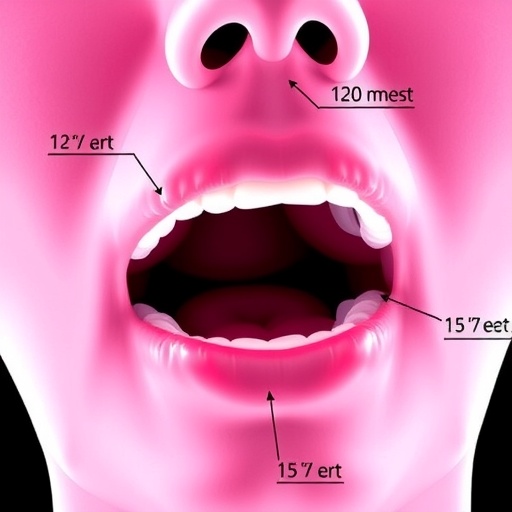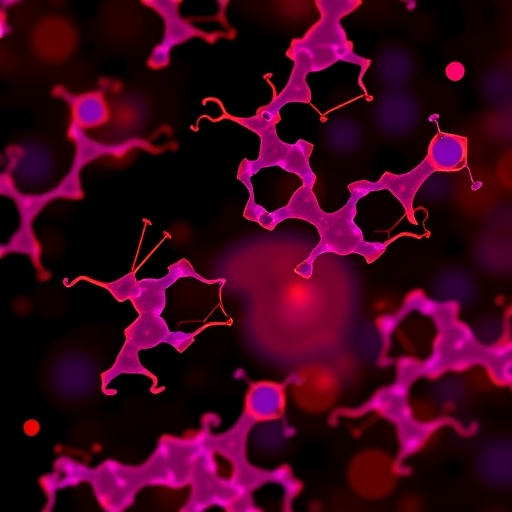Pediatric brain tumors remain one of the deadliest and most challenging forms of childhood cancer, presenting distinctive biological characteristics that render many conventional treatment modalities ineffective. Unlike adult brain tumors, these malignancies showcase unique behaviors at the cellular and molecular levels, necessitating a fundamentally different therapeutic approach. A recent systematic review published in Neuro-Oncology Advances comprehensively examines the tumor microenvironment in pediatric gliomas, emphasizing the critical need for bespoke immunotherapies that address these tumors’ intrinsic complexity.
The study reveals how pediatric gliomas cultivate a so-called “cold” tumor microenvironment—an immunological landscape largely devoid of active immune responses. This immunosuppressive milieu allows tumor cells to effectively evade immune surveillance. Such immune evasion undermines the efficacy of many standard immunotherapies, which are often designed with adult tumor immunobiology in mind. Consequently, therapies such as checkpoint inhibitors, which have revolutionized treatment in several adult cancers, often falter in pediatric gliomas.
Central to this review is the assertion that pediatric brain tumors are not simply diminutive analogs of their adult counterparts but are biologically discrete entities that require innovative, tailored therapeutic strategies. The authors argue that a deeper mechanistic understanding of the tumor microenvironment and the interplay with the brain’s innate immune cells, particularly microglia, can drive the development of smarter, safer, and more effective therapies specifically for children.
One highlighted avenue is the engineering of immune cells to overcome the naturally immunosuppressive tumor environment. Adoptive cell therapies, such as chimeric antigen receptor (CAR) T-cell therapy, are being refined to enhance their ability to infiltrate and persist within these tumors. Nonetheless, the unique challenges posed by the central nervous system’s immune privilege status demand novel design principles distinct from adult oncology paradigms.
Additionally, cancer vaccines represent a promising modality under exploration. These vaccines aim to prime the patient’s immune system against tumor-specific antigens, circumventing some of the cold tumor microenvironment’s suppressive effects. However, identifying robust pediatric glioma-specific antigens and ensuring effective antigen presentation within the brain’s specialized milieu remains a formidable hurdle.
Emerging virus-based therapies also feature prominently in this evolving landscape. Oncolytic viruses can selectively infect and lyse tumor cells while promoting local immune activation. Their dual mechanism—direct oncolysis coupled with immune priming—positions them as attractive candidates for overcoming the pediatric glioma’s immunosuppressive niche.
Integral to these innovations is the work emerging from the Kumar Lab at Dell Medical School, University of Texas at Austin. This research group investigates how brain-resident immune cells, particularly microglia, interact with tumor cells to influence growth dynamics. Microglia, the brain’s specialized macrophages, can adopt tumor-supportive phenotypes, contributing to the creation and maintenance of an immune-privileged environment.
A novel therapeutic concept under evaluation is microglial replacement therapy. This strategy involves re-engineering or replacing tumor-associated microglia with modified cells capable of restoring effective immune surveillance. By transforming the tumor microenvironment from cold to hot, such an approach seeks to empower the immune system to recognize and eradicate cancerous cells more efficiently.
The study emphasizes that understanding pediatric gliomas at the immunological level is pivotal for advancing treatment paradigms. Childhood brain tumors often harbor distinct genetic mutations and epigenetic profiles that shape their microenvironment and influence their interactions with immune components. These differences necessitate a departure from the adult-centric frameworks and call for precision medicine strategies tailored to pediatric neuro-oncology.
Moreover, the blood-brain barrier poses an additional impediment to therapeutic penetration, further complicating immunotherapy application. Innovative delivery systems are thus crucial to ensuring that engineered immune cells or viral agents can effectively reach and persist within the tumor site without eliciting undue systemic toxicity.
Cheyenne Ahamed, a lead author and second-year medical student at Dell Medical School, notes that embracing the unique features of pediatric brain tumors unlocks opportunities for therapies that are not only more effective but also safer for young patients. Given the developing brains of children, minimizing long-term neurological side effects is as critical as achieving tumor control.
This comprehensive review, therefore, charts a future roadmap for pediatric glioma immunotherapy centered on cutting-edge biological insights and therapeutic engineering. It advocates for collaborative, multidisciplinary efforts integrating neurobiology, immunology, and bioengineering to confront the deadliest pediatric cancers.
In conclusion, the adaptation of adult cancer immunotherapies to pediatric brain tumors has largely failed due to fundamental biological disparities. The recognition of pediatric gliomas as unique immunological entities drives a paradigm shift in how they are studied and treated. Emerging therapies, bolstered by robust preclinical studies and early clinical trials, offer hope that childhood brain cancer treatment will soon transcend conventional boundaries, delivering precision-targeted and effective cures for this vulnerable population.
Subject of Research: People
Article Title: Targeting the Tumor Microenvironment in Pediatric Gliomas: Advances and Future Directions in Immunotherapy
Web References: https://doi.org/10.1093/noajnl/vdaf193
Keywords: Oncology, Pediatrics
Tags: age-specific immunotherapycheckpoint inhibitors in pediatricschildhood cancer treatmentimmune evasion in tumorsimmunosuppressive landscapemolecular characteristics of tumorsneuro-oncology advancementspediatric brain tumorspediatric cancer researchpediatric gliomastailored cancer therapiestumor microenvironment





